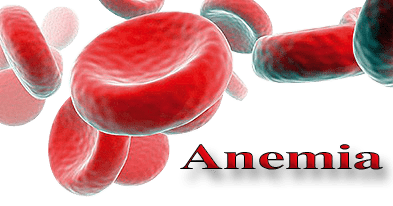James R. Speiser, DVM, DABVP, CCRT
October 9, 2015
Anemia is the condition of not having enough red blood cells. Red blood cells are basically bags of an oxygen carrier called hemoglobin that distributes oxygen to the body.
Anemia is separated into two types. The first type is called regenerative anemia and is a condition where there are less than adequate red blood cells, but the bone marrow is responding by releasing more young red blood cells than normal, so that the anemia is improving. The second type is called non-regenerative anemia where the anemia is not being corrected by the bone marrow. In this case, there is not an increased number of young red blood cells in the blood, and the anemia is not improving. Regardless of the type, there are only a few general causes:
Hemorrhage (blood loss). With sudden blood loss from trauma, anemia will normally become regenerative in a few days and will resolve. With chronic blood loss over a period of weeks or months due to intestinal parasites, fleas or urinary losses, the pet can become deficient in iron (a major component of hemoglobin), and the anemia will be non-regenerative since the bone marrow doesn’t have adequate iron to make red blood cells.
Red blood cell destruction. There are several conditions where red blood cells are actually destroyed in the body, which causes anemia.
- Toxins – Ingested chemicals can cause changes in red blood cells so that the membrane is less pliable so they can break as they squeeze through the capillaries in tissues causing anemia.
- Parasites – There are several parasites that can be transmitted to dogs and cats by fleas and other vectors that will inhabit the red blood cell and cause its destruction.
- Tumors – Some tumors can have very abnormal blood vessels that can develop small strands of coagulation protein called fibrin across the vessels. Red blood cells can be shredded and destroyed as they flow through the tumor.
- Genetics – Animals can be deficient in certain components needed to maintain the membrane of the red blood cell so that the membrane is weak. Pets with these genetic abnormalities will have red blood cells that break very easily and become anemic.
- Immune-Mediated Hemolytic Anemia – Pets can also develop antibodies against the membrane of the red blood cell for various reasons so that the immune system attacks and destroys the red blood cell, much like it would a bacterium. This causes a regenerative anemia unless the attack is within the bone marrow itself, in which case it might be non-regenerative.
Bone marrow injury. Several different infectious organisms, chemicals, and medications can cause injury to the bone marrow, which will cause it to scar severely enough to be incapable of making adequate red blood cells, which then causes a non-regenerative anemia. This type of anemia is the most difficult and discouraging to resolve.
Any type of anemia can be life-threatening if severe enough. Severe anemic patients will be lethargic, weak, and will have pale mucous membranes and a fast heart rate. Dogs and cats do have different blood types, but can easily be given a blood transfusion to treat the anemia once they have been blood-typed, and matched with an appropriate blood donor. To see if your pet can help anemic patients, check out our Blood Donor page!

